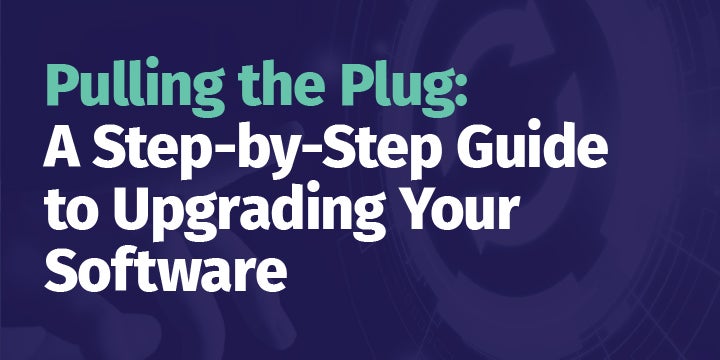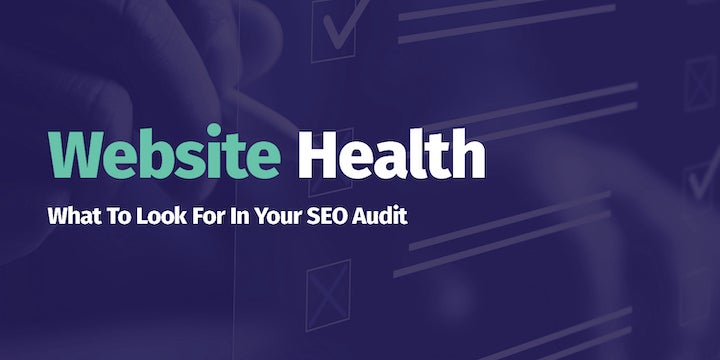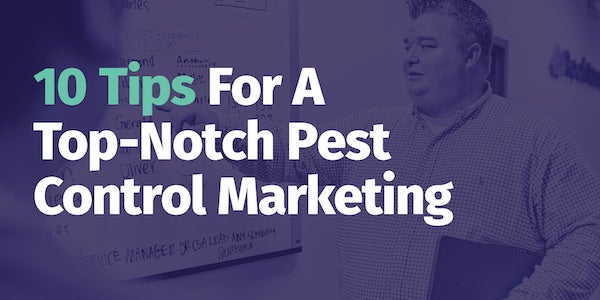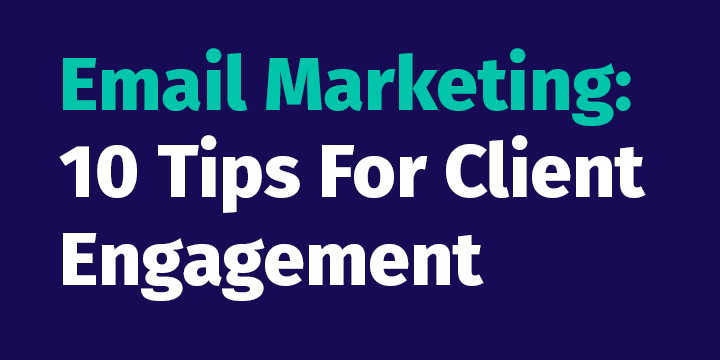Best SEO Tactics For Field Service Companies

For local-based businesses like pest control and lawn care companies, search engines can be a huge asset.
Before search engines, people had to either go through a phone book or rely on their friends for suggestions when they needed a specific good or service. Now, someone in need of your services can simply type in what they need and be automatically taken to a list of potential suppliers in their proximity.
In this way, search engines can be a blessing to local businesses of all sizes—or they can be a curse. If you’re at the top of the results list, you can expect lots of new people to be directed to your website and, from there, convert into customers. However, if you’re not, you can expect the opposite result: even if you have the best pest control or lawn care services in the area, you’ll still get next to no business if people can’t find you.
In many cases, if you can’t push your website to the first page of the Google search results page, you might as well be invisible.
In fact, the customer relationship management (CRM) and sales platform HubSpot, estimates that 75% of searchers never go to the second page of search results or beyond—making your ability to land in one of those top spots vital to your success.
In an increasingly competitive digital-driven marketplace, developing a solid online presence with a search-engine-optimized website is no longer just a beneficial practice; it has become necessary. If you want to stand out from the crowd and get noticed by your potential customers, you need to have a website that is built from the ground up to appeal to the algorithms Google and other search engines use. How do you go about that?
In this informative Eguide, we’ll take a deep dive into search engine optimization (SEO), how it affects your business and steps you can take as a field service business to make the most out of your company’s online presence.
What Is Search Engine Optimization?
Search engines work by employing “crawlers” that canvass the web for good websites they can use to populate search engine results pages. These crawlers visit different websites, download the content on certain pages, parse out if the information is valuable, and then decide whether to index the page on the search engine. The ranking of each indexed page will depend on hundreds of factors to determine which order each page should appear when someone does a relevant search.
Whenever you make a search query in Google, you are effectively asking Google to use its complex algorithms to populate a list of the best possible results for whatever it is you’re searching for. It bases your search on the available indexed sites it has collected that relate to the keywords you used to search.
Put simply, SEO is the process of maximizing your visitors to your website by incorporating strategies that push it higher up on the search engine results page (SERP). However, this is not as easy as it sounds.
When it comes to SEO, it’s all about making it as simple as possible for search engines to crawl, understand, and index the content of your website. By doing this, you can help ensure that when people search for the types of problems your business can solve, the search engine will understand from crawling your page that you are the best potential solution to their problem and direct them accordingly.
Why Is SEO Important?
SEO is designed to generate inbound leads (people that are drawn to your website from outside) rather than outbound leads (people sent to your website from an outside source, such as an email or ad). According to HubSpot, inbound leads cost approximately 60% less to generate than outbound leads. Likewise, 80% of business decision-makers want to get company information from articles rather than from advertisements, according to the Content Marketing Institute. People don’t want to be advertised to, but they’re much more receptive to being informed.
For field service companies, SEO is essential to your success in operating in the modern, digitally-driven world. For locally-focused industries, people are less likely than ever to ask around for a good pest control or lawn care provider or call one up based on an advertisement they saw. Why? Simple: making a Google search for “best pest control or lawn care near me” is so much easier.
SEO: What Matters
While search engine optimization as a process is extremely complex, the philosophy behind it essentially boils down to understanding the core components of what makes a great SEO-friendly website. Here are some of the most important factors that Google and other search engines use to determine how your website holds up to the competition:
Indexed Pages: The total number of pages on your website that search engine crawlers have found and deemed high-quality enough to present to searchers when they submit relevant queries.
Keywords: Long and short-tail keywords you’re using throughout your website. The better these keywords match up to the words and phrases people are using to search for the types of services you offer, the better chance you have of being placed at the top of the search results page.
Title Tag: The headline of each page found on your website. If you can title your website’s individual pages in such a way that they directly address what your target customers are searching for, you increase the chances that those pages will show up in an ideal search result placement.
Meta Description: The meta description is a brief summary of whatever the page someone is about to click on entails. On the SERP, the meta description is generally displayed directly below the title tag, typically in a smaller font and in gray lettering. While this is not always the case, as Google is going to display what it feels is most relevant from the web page’s content, this is generally where the meta description is found.
Images: Photographs and graphics that supplement your page’s content. While search engines are not able to ascertain the context of the images you’ve included (yet), they improve your search ranking—so long as they are in an optimized format that doesn’t slow down the time it takes for your site to load.
Image Alt Attributes: Alt attributes act as text describing the images you use to Google. Search engines use alt attributes to understand the general meaning and relevance of an image, using this information to index the page accordingly.
Page Speed: The time it takes for your website to load. The days of dial-up are long gone, and people now demand instantaneous results from their search queries. If your pages take too long to load, frustrated users will simply back out and move on to the next search result, causing your rankings to drop as your bounce rate increases.
Internal Linking: How well your website is linked together. Optimally, your website should form a comprehensive informational hierarchy that makes it easier for both readers and Google to understand the content present on each page and how that information relates to other pages throughout the site.
Backlinks: The number of times the page is linked from somewhere else. The quality and quantity of pages linking to a page on your site play a vital role in the ranking placement of that page. This is part of why creating great content that can be shared or referenced elsewhere is so important.
Content Freshness: This is how well your website presents new information on each page. You don’t want to say the same thing over and over again. Not only will your website get dinged by Google, but you’ll also effectively be cannibalizing your own content. If all of your pages basically say the same thing, they’ll be competing against each other for traffic; in the meantime, a competitor that has dedicated one great page to whatever topic you’re covering will beat you every time.
Uniform Resource Locaters: Uniform resource locators (URLs), another name for the address in the address bar for your website. Like the content on the page itself, having legible and keyword-centric URLs is important to give both readers and search engine crawlers a good idea of what they can expect by clicking on your page.
User Experience: Along with page load speed, it’s important to make your website as user-friendly as possible. Visually appealing and legible content keeps eyes on the page; intrusive pop-ups and poor site design turns people away. This includes making pages on your site optimized for desktop, laptop, and mobile devices so that users have a pleasant experience no matter how they’re accessing your content.
So how can we take the factors listed above and turn them into a successful SEO strategy for your field service company? Let’s get started.
Build A SEO-Friendly Website
Effective SEO starts from the ground level with your website itself. Your website should be built around your best potential users’ search intent: the reason why they’re making a search query in the first place. If you want the relevant page on your website to show up first on Google results, first, you have to convince Google’s search algorithms that this page is the best possible fit to answer the person’s question, and give them the information they’re looking for, or provide them with the product or service they need.
To do this, you have to build a website that speaks the same language as the people searching for your services. In order to accomplish this, you need to undergo extensive keyword research to know the specific terms and phrases people are using so that you can reverse-engineer them to inform what content you need included on different pages throughout your website. Luckily, there are a number of great tools that can help you accomplish this, such as SEMRush.
The content on your website should be useful to readers above all else. Here are some tips you can use to ensure the content you’re creating is valuable:
Identify the needs of your intended audience
Find the right keywords to target, words and phrases your ideal customers are using
Presenting original, insightful content that is genuinely helpful to your audience
Include visuals to illustrate your point
For pest control and lawn care companies, every service you offer should have a specialized page built with that service in mind and filled with relevant keywords throughout that refer back to that service. For most companies, this will mean a residential service page, a commercial service page, and individual service pages for specialty services you might offer like termite treatment or fertilization, etc.
t’s also a good idea to build specific pages based on the problems you treat. Great field service websites will feature a page or pages that go into detail about different issues people might be experiencing in your area.
Likewise, your website should feature a blog as well as other pages on your site tailored to answer specific search queries your ideal customers in the area might be asking. Blog posts and articles with titles such as What’s Attracting Mosquitoes To My Yard or Why Isn’t My Grass Growing can bring in new eyes by using the same kind of language your potential customers are speaking—more on that in the following sections.
Optimize Your Website
It’s not enough that your website is built SEO-friendly. It must also be sleek, quick to load, easy to navigate, and legible. It’s not just that having these features benefits your website, but rather that failing in this area will leave you with a website that no one will spend very long trying to navigate.
Research by the Nielsen Norman Group indicates that people spend as little as 10-20 seconds before leaving a website if they feel they can’t immediately connect with your message. You only have one chance to connect with a new lead, so it is essential that your website doesn’t commit any of the cardinal sins that will cause them to immediately back out.
Part of building an SEO-friendly website is ensuring that it loads quickly and that it is easily navigable so that people who land on any page on your website can immediately move on to a relevant service page. One example of an important element that affects page speed is your image file sizes. The larger your image file size, the longer it will take the web page to load. For this reason, it’s important to compress images you’ll feature before uploading them.
Here are some tips you can use to improve your website’s user experience:
Use appropriate subheadings to help categorize your content and show both Google and readers what’s most important at a glance
Include relevant visuals to illustrate your points and give readers a better understanding of the content you provide
Use lots of white space. Instead of big blocks of text, break your content down into manageable, paragraph-sized chunks
Make your site mobile-friendly so that no matter what device your readers use, everyone is left with the same positive experience
Avoid intrusive pop-up ads, which not only irritate readers but are also now penalized by Google
Use short, keyword-rich URLs across your website that will both increase your ranking and make the page easier for readers to return to
Incorporate a mix of long-tail and short-tail keywords in order to maximize your chances of attaining both a broad reach and a narrow focus
This means you need a website that is able to directly address whatever problems your potential customers might be facing—and put your solutions to those issues right at the forefront. Moreover, they need to be able to navigate through your website quickly and easily, or else they’ll most likely lose patience and look for answers elsewhere. Whether they’re viewing your website from their desktop or from their phone, your website should be fast, accurate, and, most importantly, useful to your target audience. Make yourself a valuable resource, and you’ll gain the trust of your readers, which correlates to willing customers.
Optimize Images On Your Website
Images play a vital role in attracting and maintaining your readers’ attention. HubSpot market research indicates that articles with images get 94% more views than those without images, so articles on your website should always feature an appropriate image to go with them.
If you’re selling cockroach treatments in the New York area, your images should have corresponding alt text entries that are appropriate to the image they accompany: “cockroach infestation in New York” or “cockroach treatment in New York,” etc.
You’ll need to provide alt text for every image you use. The alt text is the text that appears when you hover over an image on a webpage. Again, while search engines cannot truly read the image itself, they can read the alt text, and they will incorporate the alt text into the algorithm to score the page’s value. That means that every image on every page across your website should be accompanied by alt text that is appropriate to the image to boost its SEO value. However, avoid keyword stuffing: adding a bunch of keywords that may not fit your content in an attempt to extend your visibility. Give a concise description of what the image entails and no more.
Beyond the content of the image, you also need to ensure you’re using the correct size and file format. Search engines also take into account the speed it takes your page to load. If you use an inappropriately large file format, it can cause the page to lag when it loads, consequently tanking its SEO value.
Your website should be filled with images and graphics that illustrate your value proposition. This means not only images showing the insects or lawn issues your customers are up against but also images of your team, pest-free home exteriors or bright green lawns, and of happy customers. Remember, you’re selling how your services can help solve their problems and what the end result will be.
You should also consider including video embedding on a page. A lot can be said about a company from a quick video of a specific service or simply giving a potential customer insight into who the business/ business owners and technicians really are. If you have videos available or have the means in which to create them, it can aid their performance and overall user experience.
Maintain An Active Blog
No modern website is complete without an active blog. Getting your website off the ground is just the first step; once that’s complete, you need to implement a blog to sustain it. Updating your website frequently is one of the most important factors Google takes into account when determining SEO ranking. Blogging is an excellent way to make sure Google knows your website is still very active.
From a customer perspective, your blog gives you plenty of opportunities to show your knowledge as a service provider. From an SEO perspective, maintaining an active blog gives your website more pages in total, all of which (if written effectively) will continue to build on your website’s overall SEO value as these pages are indexed by search engines.
HubSpot statistics indicate that websites with an active blog generate an average of 67% more leads per month than those without. SEMRush blogging statistics for 2021 indicate that maintaining an active blog gives an average of 434% more indexed pages and 97% more indexed links, giving your website more physical volume. This gives you more chances that these individual pages will attract new leads.
Maintaining an active blog also naturally helps increase your website’s overall page freshness. So long as you can ensure that you are hitting upon different aspects of pest control or lawn care with every blog you create, you’ll be building a varied knowledge base that will show your readers your expertise in a wide range of topics while building your search engine credibility by establishing your website as a valid resource.
Ideally, every post you make will introduce a new topic that both resonates with problems your readers might be facing and hits on a new set of keywords that Google can use to drive traffic to your website.
For field service companies, building a great blog is the natural next step in evolving your brand’s online presence. Many people that deal with pest or lawn issues in their daily lives will be uncertain about what steps they should take to resolve them. Your blog is your opportunity to educate readers with tips that can genuinely make their lives easier while simultaneously positioning yourself as the goto expert for problems they might be facing in the future.
Blogs are great in part because they serve as an excellent beginning point to move new customers down the sales funnel. For example, when someone with an ant problem or brown patches in their grass makes a Google search about an issue they are trying to resolve, typically, they do not start with “buy ant control or fertilization” but instead start with “how do I get rid of ants or bare spots in my grass.” Therefore, the top result will not be an e-commerce page selling a relevant product or service but instead a blog post giving them details about their search query. However, if the blog is detailed enough and informative enough to keep them on the page, combined with an effective call to action (CTA) at the end, there is a high probability that the blog post can lead to them moving on to the relevant ant control or lawn fertilization page on your website.
Just remember to always end every blog post with a CTA encouraging readers to get in contact with you or make a purchase. Remember, the person behind the keyboard is ultimately reading your blog in hopes of solving whatever problem they’re facing; luckily for them, you as the field service expert are available and happy to help, and as an industry expert, you’re their best bet for a complete and effective treatment.
Implement Effective Linking Strategies
With your site up and running, you next should focus on building an internal linking structure. Internal links are links that direct you from one page to another within the same website. Beyond making your website easier to navigate, your internal linking structure will also help establish an information hierarchy for your website that Google can use to better understand it. The better Google understands what each page is saying, the better the chances that it will understand that your page is the best one to direct someone to when they make a relevant query.
According to SEMRush, optimizing your internal linking structure can boost organic traffic by as much as 40%.
For field service companies, you should use internal links whenever appropriate to turn your website into a network where both users and search engine crawlers can navigate from one page to the next, ultimately leading them toward the “Contact Us” or “Buy Now” page.
If you’re writing a blog about a specific pest, include a link to a relevant pest identification page. If you’re focusing on a specific lawn service, have it linked appropriately in the introduction. If your blog is focused on a specific geographic area, include a link to that location’s service page on your website.
Another important thing about creating a great linking strategy is that it simply keeps people on your website longer as they navigate from one relevant link to the next. And the longer they stay on your website, the more likely they are to end up on one of the service pages eventually.
Promote Your Website On Social Media
Social media is an excellent tool to get your message out to the masses. 23% of time spent online is on social media sites, according to the Content Marketing Institute’s 2022 Content Marketing Insight Report. Beyond getting new eyes on your website, social media also gives business owners unprecedented ability to connect directly with their customers in a way never before possible.
Every blog post you make should have an accompanying social media post to help broadcast it to as large an audience as possible. If you’ve got a piece that you’re really proud of, promote it as much as possible.
Your social media posts can help significantly extend your reach for every blog post you make. Every blog you create should have an accompanying social media post to share with the people you interact with daily.
Your Partner In Growth
At FieldRoutes, a ServiceTitan company, our team of expert website builders, graphic designers, content specialists, and search engine gurus have partnered with members of the field service industry for over a decade. While we have branched out in our time, our company was created with one goal in mind: to understand the field service industry better than anyone else in order to help you outperform your competitors.
Simply put, no one understands marketing for field service companies better than FieldRoutes.
We have all the tools you need for a bright, vibrant website built from the ground up to attract your perfect potential customers. Using a combination of elegant, fast websites, insightful content, and effective SEO strategies, we’ve helped hundreds of field service businesses extend their reach further than ever before possible
Call for a Demo at 207.492.4235
No one is better at optimizing online presence for field service providers better than FieldRoutes. Contact us today for all the details.
Works Cited
Search Engine Land. (7 July 2010). “What Is SEO / Search Engine Optimization?” Search Engine Land. Retrieved from https://searchengineland.com/guide/what-is-seo SEMRush. (24 January 2022). “9 SEO Best Practices.”
SEMRush. (24 January 2022). “9 SEO Best Practices.” SEMRush Blog. Retrieved from https://www. semrush.com/blog/seo-best-practices/?kw=&cmp=US_SRCH_DSA_Blog_Core_BU_EN&label=dsa_ pagefeed&Network=g&Device=c&utm_content=484020088245&kwid=dsa-1057183189195&cmpid=11769 537497&agpid=117334833031&BU=Core&extid=23669721331&adpos=&gclid=CjwKCAjw7IeUBhBbEiwADhi EMb2Ax3TqmhYbR7qcXTFYXKHuDw4chVNO6ndzGzYddinh9XgsCLk6OxoCBLQQAvD_BwE
Blue Corona. (6 March 2014). “INDEXED VS. NON-INDEXED PAGES IN GOOGLE WEBMASTER TOOLS.” Blue Corona Blog. Retrieved from https://www.bluecorona.com/blog/indexed-vs-non-indexed-pages/
Content Marketing Institute. (2022). “What Is Content Marketing?” Content Marketing Institute. Retrieved from https://contentmarketinginstitute.com/what-is-content-marketing/
HubSpot. (2014 January 20, updated 2020 February 18). “10 Stats About Inbound Marketing That Will Make Your Jaw Drop.” HubSpot Blog. Retrieved from https://blog.hubspot.com/insiders/inboundmarketing-stats Deepcrawl. (2018 May 17). “Search Engine Crawling.”
Deepcrawl Technical SEO Library. Retrieved from https://www.deepcrawl.com/knowledge/technical-seo-library/search-engine-crawling/
Content Marketing Institute. (2021 October 13). “B2B Content Marketing Insights for 2022: More Budget, More Work, More Empathy [Research].” Content Marketing Instute Trends and Research. Retrieved from https://contentmarketinginstitute.com/2021/10/b2b-power-content-marketing-research/ SEMRush. (2020 April 3). “Internal Links: A Guide to Building a Strategy that Works.” SEMRush Blog. Retrieved from https://www.semrush.com/blog/internal-links-guide-to-building-strategy-that-works/
SEMRush. (2021 February 12). “81 of the Most Up-to-Date Blogging Statistics in 2021.” SEMRush Blog. Retrieved from https://www.semrush.com/blog/blogging-stats/
Nielsen Norman Group. (2011 September 11). “How Long Do Users Stay on Web Pages?” Nielsen Norman Group Blog. Retrieved from https://www.nngroup.com/articles/how-long-do-users-stay-on-webpages/
Jeff Bullas. (2017 October 21). “6 Powerful Reasons Why you Should include Images in your Marketing.” Jeff Bullas Business Blog. Retrieved from https://www.jeffbullas.com/6-powerful-reasons-why-youshould-include-images-in-your-marketing-infographic/





